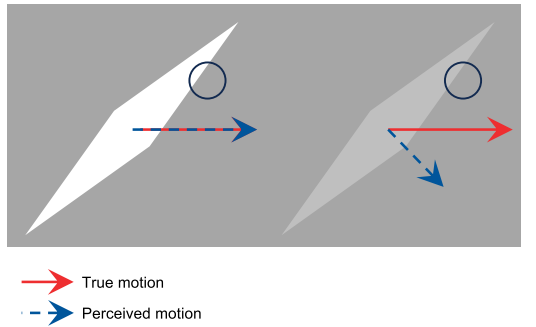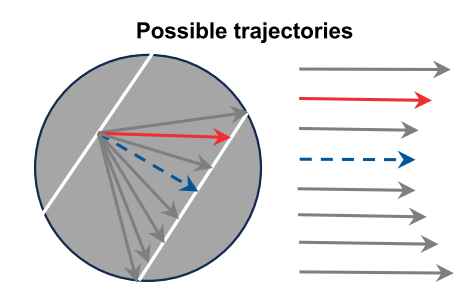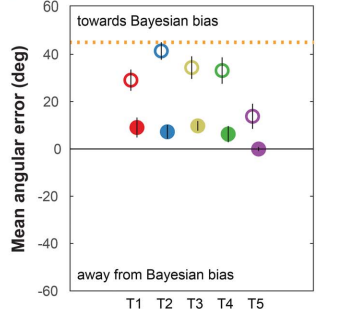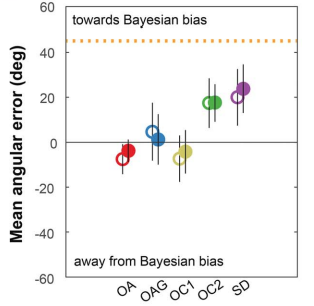Motion misperceptions in low vision populations
A new paradigm for assessing mechanisms of motion perception in people with low vision
In a well-known visual illusion, a rhombus shape moving side-to-side appears to be moving diagonally when it is at low contrast. This is thought to arise from a ‘slow-speed prior’ in the human visual system–a bias towards perceiving motion as slower than it actually is. Theories in the literature often suggest that the ‘slow-speed prior’ is a consequence of the fact that statistically, most objects in the environment do not move, or move slowly. We were interested in whether people with medical conditions that affect their vision (collectively known as ‘low-vision’), who may experience different statistics in their visual input, also display signs of having this ‘slow-speed prior.’ As a first step towards addressing this question, we developed a paradigm for assessing the extent to which the rhombus motion illusion occurred in a small sample of patients with low vision.


We found that while participants with typical vision experienced the illusion strongly at low contrast, only some participants with low vision experienced it. This is interesting because the motion illusion is a misperception of motion, but these low vision patients appear less susceptible to it. Future work could use our experimental paradigm to assess a larger population of low vision patients and determine how robust our finding is.

